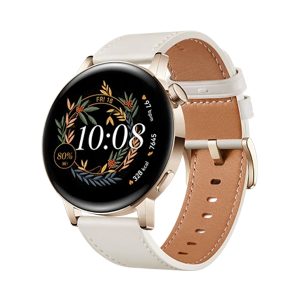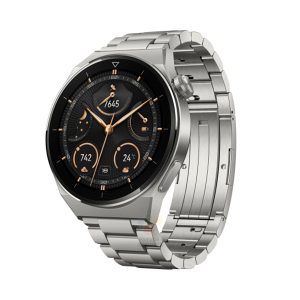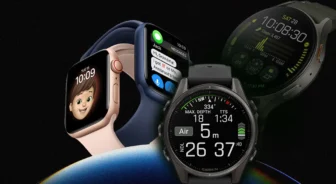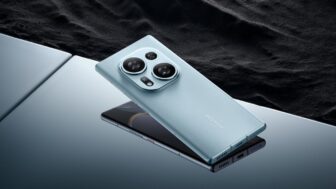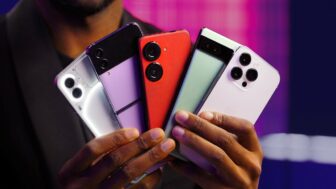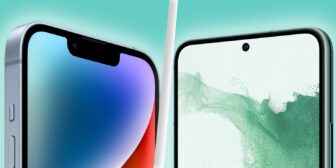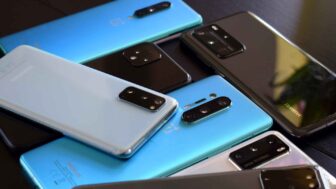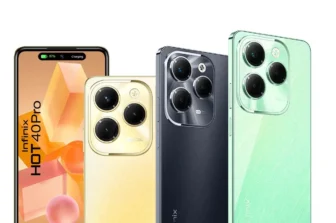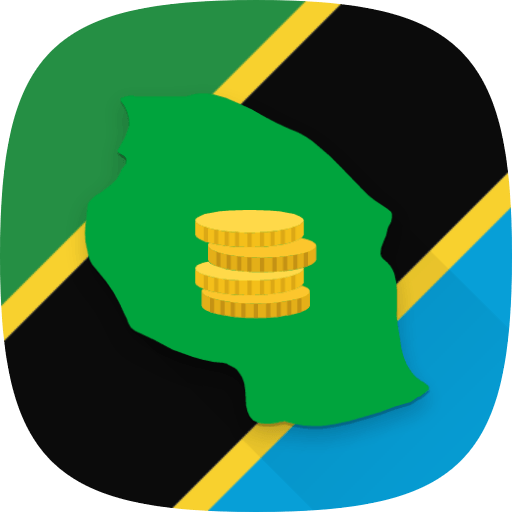- Price Tanzania
- Compare
- Huawei Watch GT 3 vs Watch GT 3 Pro
Huawei Watch GT 3 vs Huawei Watch GT 3 Pro
What is The Price Difference Between Huawei Watch GT 3 and Huawei Watch GT 3 Pro?
The price difference between these two smartwatch is approximately TZS 430,000, with the Huawei Watch GT 3 Pro being more expensive than the Huawei Watch GT 3. The Huawei Watch GT 3, with 32 MB of RAM and 4 GB of storage, starts at approximately TZS 620,000. In comparison, the Huawei Watch GT 3 Pro, featuring 1 GB or More of RAM and Unspecified of storage, is currently available starting at approximately TZS 1,050,000.
- Product NameProduct NameProduct Name
- Product Image
- PricePriceTZS 620,000PriceTZS 1,050,000
- Our RatingOur RatingOur Rating
- Brand
- CategoryCategoryCategory
General Overview
- Product
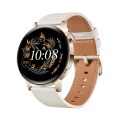 Product
Product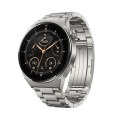
- Device TypeDevice TypeRoundDevice TypeBar
- ModelModelMIL-B19ModelODN-B19, FRG-B19
- AnnouncedAnnounced2021, NovemberAnnounced2022, May
- ReleasedReleased2021, NovemberReleased2022, May
- StatusStatusAvailableStatusAvailable
Design
- Product
 Product
Product
- TypeDesign Type called form factor refers to a mobile phone's size, shape, and style as well as the layout and position of major components of phone. There are three major form factors seen in mobile phones => bar phones, folding phones and sliding phones.TypeBarTypeBar
- DimensionsDimensions45.9 x 45.9 x 11 mm (1.81 x 1.81 x 0.43 in)Dimensions46.6 x 46.6 x 10.9 mm (1.83 x 1.83 x 0.43 in)
- WeightWeight35 g (42mm) / 42.6 g (46mm) (1.23 oz)Weight50 g (43mm) / 54 g (46mm) (1.76 oz)
- ProtectionProtectionGlass front, plastic back, stainless steel frameProtectionSapphire crystal front, titanium frame or ceramic frame, ceramic back
- ColorsColorsBlack, Steel, GoldColorsSilver
Display
- Product
 Product
Product
- Display TypeDisplay Technology => A number of display technologies and types used in mobile phones => TFT (Thin Film Transistor), IPS (In-Place Switching), OLED (Organic Light Emitting Diode), AMOLED (Active-Matrix Organic Light-Emitting Diode), Super AMOLED (an even advanced version of AMOLED), Resistive Touchscreen (Resistive touchscreens contain two layer of conductive material with a very small gap between them which acts as a resistance), Capacitive Touchsceen (Capacitive touchscreen technology consists of a layer of glass coated with a transparent conductor)Display TypeAMOLEDDisplay TypeAMOLED
- SizeSize1.43 inches, 12.5 cm2Size1.43 inches, 12.5 cm2 (~49.1% screen-to-body ratio)
- ResolutionResolution466 x 466 pixelsResolution466 x 466 pixels
- Display ColorsDisplay Colors is refers to the number of different shades of colors that the screen is capable of displaying => 64K colors, 256K colors and 16 million colors, Obviously 16M is highest available range of colors and better than others.Display Colors16M colors or moreDisplay Colors16M colors or less
- Pixel DensityPixel Density (PPI) is refers to the concentration of pixels on a particular display, measured in pixels per inch (ppi). Pixel density is calculated by dividing the diagonal pixel resolution of a display by its diagonal size, higher pixel density better display quality.Pixel Density326 ppi densityPixel Density326 ppi density
- Touch ScreenTouch ScreenYesTouch ScreenNo
- FeaturesFeaturesCompatible with standard 22mm straps (46mm model), 20mm straps (42mm model)
50m water resistant
5 ATMFeaturesCompatible with standard 22mm straps (46mm model), 20mm straps (43mm model)
ECG certified
30m water resistant
5 ATM
IP68
Software
- Product
 Product
Product
- OSOS => Every computer system run on a base software called Operating System (OS). Operating System controls all basic operations of the computer (such as smartphone, PDAs, tablet computers and other handheld devices). The Operating System allows the user to install and run third party applications (apps), apps are used to add new functionality to the device.OSSupport iOS & AndroidOSSupport iOS & Android
- User InterfaceUI or user interface of a device is the look and feel of the on-screen menu system. How it works, its color scheme, how it responds to button presses, all of these things are part of the user interface.User InterfaceHarmonyOSUser InterfaceHarmonyOS
Hardware
- Product
 Product
Product
- ChipsetChipset is a group of integrated circuits designed to perform one or a more dedicated functions, often with real time computing constraints, Popular smartphones are equipped with more advanced embedded chipsets that can do many different tasks depending on their programming.ChipsetARM Cortex-M processorChipsetUnspecified
- CPUCPU (Central Processing Unit) mostly known as processors, CPU processes instructions in order to carry out certain functions that make your device operate properly. Processors are often described as the brain of computers, smartphones and tablets, Smartphones and tablets rely on processors to carry out their every task, Processors are an incredibly important factor in selecting any type of computing device, including your smartphone.CPUOne-coreCPUOne-core
- GPUGPU (Graphics Processing Unit) is a single-chip processor designed to rapidly manipulate and alter memory to accelerate the creation of images in a frame buffer intended for output to a display, This includes things such as lighting effects, object transformations, and 3D motion.GPUUnspecifiedGPUUnspecified
- RAMRAM (Random Access Memory) is a type of computer memory that can be accessed randomly, any byte of memory can be accessed without touching the preceding bytes that allows information to be stored and accessed quickly from random locations. RAM is the most common type of memory found in computer systems, smartphones, tablets and other electronic devices.RAM32 MBRAM1 GB or More
- Internal StorageInternal Storage is a data storage space (flash memory) mostly used in smartphones, tablets and other electronic devices where operating system, apps, music, photos, videos, files and other user data Is stored.Internal Storage4 GBInternal StorageUnspecified
- Card SlotMemory Card Slot is a special slot for inserting a memory card. Memory cards allow you to expand the phone's built-in memory, A memory card (sometimes called a flash memory card or a storage card) is a small storage medium used to store data such as text, pictures, audio, and video, for use on small, portable or remote computing devices such as mobile phones, mp3 players, digital cameras.Card SlotNoCard SlotNo
- SensorsSensors are electronic components that detects and responds to some type of input from the physical environment. The specific input could be light, heat, motion, moisture, pressure and location, The output is generally a signal that is converted to use in computing systems, a location sensor, such as a GPS receiver is able to detect current location of your electronic device.SensorsAccelerometer, gyro, heart rate, barometer, compass, SpO2, thermometer (body temperature)SensorsAccelerometer, gyro, heart rate, barometer, compass, SpO2, thermometer (body temperature)
Connectivity
- Product
 Product
Product
- BluetoothBluetooth is a wireless communications technology for exchanging data between mobile phones, headsets, computers and other network devices over short distances without wires, Bluetooth technology was primarily designed to support simple wireless networking of personal consumer devices.Bluetooth5.1, LE, EDRBluetooth5.2, A2DP, LE
- Wi-fiWi-Fi is a popular wireless networking technology using radio waves to provide high-speed network connections that allows devices to communicate without cords or cables, Wi-Fi is increasingly becoming the preferred mode of internet connectivity all over the world.Wi-fiNoWi-fiNo
- Wi-fi HotspotWi-fi Hotspot is a mobile feature allows your phone to share its cellular data connection by creating a Wi-Fi network.Wi-fi HotspotWi-fi Hotspot
- USBUSBNoUSBNo
- GPSGPS The Global Positioning System is a satellite-based radio navigation system, GPS permits users to determine their position, velocity and the time 24 hours a day, in all weather, anywhere in the world, In order to locate your position, your device or GPS receiver must have a clear view of the sky.GPSYes, with dual-band A-GPS, GLONASS, BDS, GALILEO, QZSSGPSYes, with dual-band A-GPS, GLONASS, BDS, GALILEO, QZSS
- NFCNFC (Near field communication) is a set of standards for smartphones and similar devices to establish peer-to-peer radio communications with each other by touching them together or bringing them into proximity, usually no more than a few inches.NFCNFC
- Wireless ChargingWireless Charging (Inductive Charging) uses an electromagnetic field to transfer energy between two objects. This is usually done with a charging station. Energy is sent through an inductive coupling to an electrical device, which can then use that energy to charge batteries or run the device.Wireless ChargingYesWireless ChargingYes
Data
- Product
 Product
Product
- GPRSGPRS (General Packet Radio Service) is a packet oriented mobile data service on the 2G and 3G cellular communication system's global system for mobile communications (GSM), Generally, GPRS is used for the purpose of wireless data transfer, such as sharing pictures and videos or browsing the Internet via a mobile phone connection.GPRSGPRS
- EDGEEDGE (Enhanced Data GSM Environment) is a wireless network technology generally considered the next step in the 2G network offers data transfer rates up to four times faster than ordinary GSM networks, Generally, EDGE is used for the purpose of wireless data transfer, such as sharing pictures and videos or browsing the Internet via a mobile phone connection.EDGEEDGE
- SpeedSpeedNo DataSpeedNo Data
Battery
- Product
 Product
Product
- Battery TypeBattery Type => Cell phones run on various kinds of batteries depending on the manufacturer, phone size or shape and features. There are basically four types of cell phone batteries => Lithium Polymer, Lithium Ion, Nickel Metal Hydride and Nickel Cadmium.Battery TypeLi-Poly (Lithium Polymer)Battery TypeLi-Poly (Lithium Polymer)
- CapacityBattery Capacity is a measure (typically in Amp-hr) of the charge stored by the battery, and is determined by the mass of active material contained in the battery. The battery capacity represents the maximum amount of energy that can be extracted from the battery under certain conditions.Capacity455 mAh, BatteryCapacity530 mAh, Battery
- PlacementPlacementNon-removablePlacementNon-removable
- Fast ChargingFast charging uses the battery charging technology which increases the charging power and hence the battery gets charged faster.Fast ChargingNoFast ChargingNo
